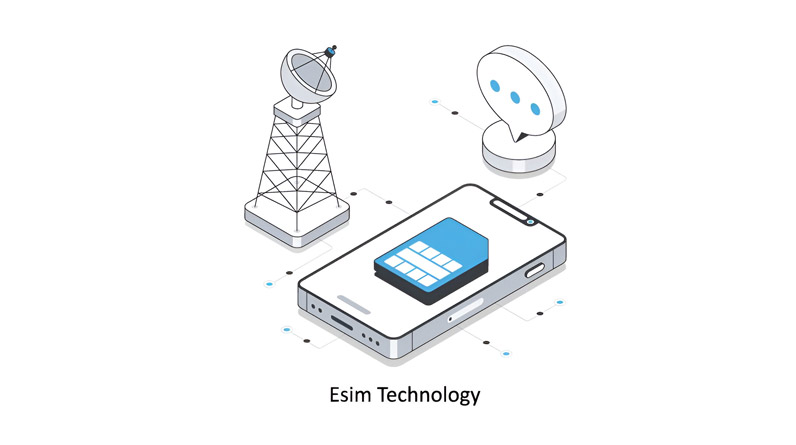The UAE has always been at the forefront of adopting advanced technologies, and satellite internet is no exception. As the nation continues to position itself as a global leader in smart cities, digital transformation, and space innovation, connectivity plays a pivotal role in enabling these ambitions. Over the last few years, satellite communications have evolved dramatically, offering high-speed, low-latency internet solutions that were once unimaginable. With new technologies, changing business needs, and increasing competition, the future of satellite internet in the UAE looks exceptionally promising.
In this article, we explore the key trends, innovations, and emerging players set to redefine the UAE’s satellite connectivity landscape—and why the demand is rapidly growing across industries.
1. Rising Demand for High-Speed Remote Connectivity
The UAE’s rapid development across remote regions—from desert tourism hubs to offshore energy operations—has created a strong need for reliable internet where traditional fiber or mobile networks cannot reach. This is where satellite internet continues to prove its value.
Industries such as:
- Oil & gas
- Maritime and offshore logistics
- Remote construction sites
- Smart farming
- Aviation
- Emergency services
depend heavily on stable, uninterrupted connectivity. As these sectors evolve, they require faster and more efficient communication technologies.
This growing demand is encouraging innovation and pushing the best satellite internet providers in UAE to expand their coverage, reduce latency, and introduce more flexible connectivity plans tailored to enterprise needs.
2. Low-Earth Orbit (LEO) Satellites Revolutionizing Internet Performance
For decades, traditional satellite networks relied on geostationary (GEO) satellites located 36,000 km above Earth. While they delivered wide coverage, latency remained high, limiting real-time applications like online gaming, VoIP calls, and video conferencing.
LEO satellites—operating at just 550 to 1,200 km altitude—have changed the game entirely.
Key benefits include:
- Ultra-low latency
- Faster speeds comparable to fiber
- More consistent performance
- Wider accessibility, even in remote areas
- Scalability for large commercial operations
This shift toward LEO networks is accelerating the adoption of modern satellite internet in the UAE. Companies like Starlink, OneWeb, and other emerging providers are expanding rapidly, competing to deliver next-generation connectivity solutions for both consumers and enterprises.
3. Expansion of Enterprise-Grade Satellite Solutions
The business ecosystem in the UAE is evolving at a fast pace. Government digitalization initiatives, cloud-based enterprise systems, and remote operational technologies demand robust, enterprise-grade internet.
This has led to the rise of specialized packages such as Starlink Internet Packages for Enterprises, designed for:
- Large corporations
- Remote business hubs
- Field offices
- Critical operations requiring uninterrupted service
- Tech-driven businesses heavily reliant on cloud access
Enterprise satellite plans now come with features such as:
- Dedicated bandwidth
- Priority network access
- Managed services
- Advanced cybersecurity tools
- Multi-site connectivity
- High-capacity rooftop antennas
With the UAE pushing toward more tech-centric industries, enterprise-grade satellite solutions are set to become the new standard.
4. Integration with 5G and IoT Ecosystems
The UAE is one of the earliest adopters of 5G technology, and satellite internet is quickly becoming a crucial part of the broader connectivity ecosystem.
Satellites + 5G + IoT = A powerful combination
Satellite networks can support:
- IoT sensors for smart agriculture
- Fleet tracking systems
- Remote patient monitoring
- UAV (Drone) operations
- Smart city infrastructure
- Environmental monitoring
By bridging the gap between remote areas and urban centers, satellites ensure that IoT systems remain connected everywhere—not just within 5G coverage zones.
This integration enhances the capabilities of the nation’s digital infrastructure and supports its vision for a technology-driven future.
5. More Competitors Entering the UAE Market
Until recently, satellite internet options were limited and expensive. However, with the rise of LEO constellations and new space-tech companies, competition is increasing rapidly.
The best satellite internet providers in UAE are now entering a more competitive era, where pricing, performance, and service quality matter more than ever. Leading players include:
- Starlink
- YahClick
- OneWeb
- HughesNet
- Inmarsat
- Thuraya (UAE-based)
This increase in competition results in:
- More affordable packages
- Higher speeds
- Better customer support
- Flexible contracts
- Specialized business solutions
As new players continue to enter the market, innovation will accelerate even further.
6. Greater Focus on Hybrid Connectivity Solutions
Businesses in the UAE are increasingly adopting hybrid connectivity models that combine:
- Fiber
- 5G mobile internet
- Wi-Fi 6
- Satellite internet
This ensures uninterrupted operations even if fiber lines are damaged or mobile connectivity drops.
Hybrid networks also help optimize performance—for example, switching between fiber and satellite depending on load, latency, or availability. Many Starlink Internet Packages for Enterprises already offer hybrid integration options.
This trend will continue growing as organizations prioritize redundancy and business continuity.
7. Government Support for Space and Connectivity Innovations
The UAE government has heavily invested in space exploration, digital transformation, and innovation. Projects such as:
- UAE Space Agency programs
- Mohammed Bin Rashid Space Centre achievements
- The Mars Mission
- Investments in local satellite companies
demonstrate the nation’s commitment to advancing satellite technology.
This strong government backing ensures rapid regulatory development, infrastructure expansion, and greater opportunities for both local and international satellite providers.
As a result, businesses and consumers will benefit from faster approvals, better coverage, and more advanced services.
8. Future Outlook: What to Expect in the Next 5–10 Years
The satellite internet landscape in the UAE is poised for massive advancement. The future will likely bring:
✔ Faster speeds exceeding 1 Gbps
Thanks to improved satellite density and advanced antennas.
✔ More enterprise-focused packages
As remote operations expand across industries.
✔ Smarter satellite terminals
Portable, lightweight, AI-powered, and self-aligning.
✔ Lower latency approaching fiber levels
Especially with expanding LEO constellations.
✔ Increased affordability
Driven by competition among the best satellite internet providers in UAE.
✔ Universal connectivity
Even the most remote parts of the UAE will enjoy fast, reliable satellite broadband.
Conclusion
The UAE is entering a new era of connectivity powered by next-generation satellite technology. With innovations in LEO networks, integration with 5G and IoT ecosystems, and the growth of advanced solutions like Starlink Internet Packages for Enterprises, satellite internet is set to become a mainstream connectivity option rather than just a backup system.
As competition grows and technology evolves, both businesses and consumers in the UAE will benefit from faster, more reliable, and more affordable satellite broadband—strengthening the nation’s leadership in digital transformation.



